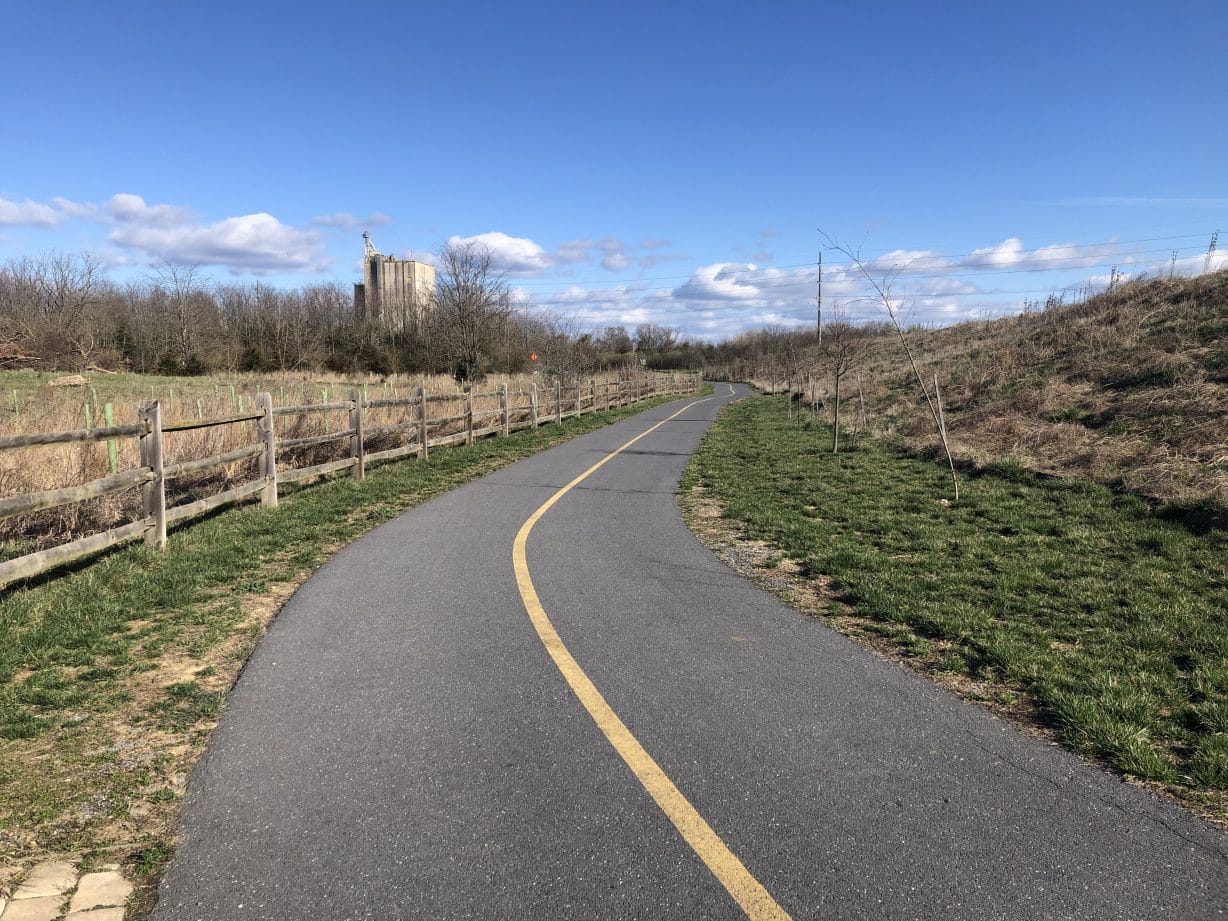
By Sofia Samatar
“The Friendly City” is a weekly column about walking in Harrisonburg that will run during 2024. Each week, your friendly correspondent, writer and teacher Sofia Samatar, will reflect on a walk in our city.
Let’s go east up the hill today, then north along Jackson Street, on this keen, sharp-edged morning, when it feels good to climb up through the alleys dotted with azure speedwell.
Look at this view! I’m at the crest of the hill. If I could walk through the air, I’d step right onto the tops of the spring trees, trees that will soon be so thick with leaves it will look like there can’t be a city down below, as if a forest stretches all the way to the mountains.
Walking down Liberty Street, I pass a house with a boarded-up door, a thick white column that reads Airgas, a long anonymous structure with all its windows closed. Again, as on so many of my walks in the city, the sidewalk disappears. There’s no one else here, no palpable human presence, only the vague shapes of faces behind glass in the cabs of the trucks that pass me, roaring, pushing hot wind against my hair.
How quickly one comes to the edge of a minor city. The air is transformed by the noise of the trucks, becoming fierce, embattled, smelling of hot rubber and exhaust, making me feel small, misplaced, as if I don’t belong. Trucks and detached trailers stand in a parking lot like the remnants of a ghost town. I pass a row of buildings I can’t identify, windowless things like warehouses with big garage doors, their silent bulk exuding the desolation of some Babylonian ruin.
I shouldn’t be here, I think, I should turn around. It feels dangerous walking alone with these trucks juddering past, with nobody else in sight, among these huge objects, the piles of gravel along the railroad track, the stacks of heavy wooden ties, the giant pipes cracked with rust. Under these conditions, the beer cans littering the embankment are cheering, human-size things. From what I can see, the neighborhood is partial to a brand called Natural Light. I’m heartened by these signs of life, by the surprised-looking man in overalls who waves at me from Miguel’s Tire Service, the child’s swing dangling from a sycamore tree, and the little yard crammed with objects—chairs, hoses, coolers, rakes, a stone gargoyle, a plastic deer. These gleams of human presence give me the courage to go on, past the asphalt expanse of the Southern States – Rockingham Petroleum Cooperative, past Extinguisher Sales & Service with its nineteenth-century lettering reminiscent of a saloon in an old western, until I reach the Northend Greenway.
Now it’s as if I’ve passed through a spangled curtain into a great sunlit hall secluded from the noise of the road—a spacious, perfumed place filled with the silken rustle of wild teasel under a ceiling draped in blue brocade. A path unrolls before me, smooth as a carpet. Birds trill wildly from the trees. Almost at once a pair of walkers passes me, nodding. “Hi!” I exclaim, amazed at the vitality surging around me: sparrows, finches, young honey locust trees, people! This is a finished stretch of the Northend Greenway, designed, I read on the public works website, as a path for cyclists and walkers, connecting people in the north of the city with “where they want to go.” At this point, it can’t really connect me with anything—I know from previous experience that it’s going to drop me at an inhospitable railroad crossing—but the path itself is worth visiting. The path is a destination, a channel of freshness opening in the landscape.
Only on the Greenway do I notice how stiffly I’ve been walking, tensed against the rush of the traffic, breathing small sips of acrid air. Here, my arms swing loose. My lungs expand. I can’t shake the feeling that I’m in some grand salon, that these neatly planted trees are pillars, their buds in the sun like lamps. Here’s a bench, perfectly placed to listen to the creek burbling in its bed with the sound of a piano playing in the next room. Across the water, the trees bend and sway, filled with more robins than I’ve ever seen in one place, like a chorus of hired singers in crimson waistcoats.
The abrupt change between the industrial zone and the atmosphere of the Greenway is not something you can experience from a car. You have to get out in it, to feel the menace of sidling along a road with no sidewalk, then the pleasure and relief of an open path. I think of the yards around town, dense with ivy and untrimmed trees, where signs are posted reading Wildlife Sanctuary. The Greenway, carving out a space where large vehicles can’t go, precisely scaled for Homo sapiens sapiens, is a human sanctuary.
And yet it would be going too far to draw a strict line between the Greenway and the tower of Pilgrim’s rising in the distance. There’s nothing more human than a factory. Only we can make a landscape as alienating to the body as a parking lot. If entering the Greenway feels like stepping into a palace, it’s because it’s crafted, architectural, the product of human effort, of city planning, tree-planting volunteers, and donations from local businesses. In a way, I think, laughing, it’s as natural as Natural Light.
Dear Friendly City! I love to see you live up to your name, recognizing that there’s more than one way to transform a landscape, restoring your creek, bringing back the birds, making space for human bodies where we won’t be knocked down and crushed by the things we’ve made, collaborating with plants and animals the way a brewer teams up with hops and fermenting microorganisms, designing corridors of natural light: spaces of sweetness and relaxation, golden as a glass of beer, effervescent with grass-scented air, intoxicating.
